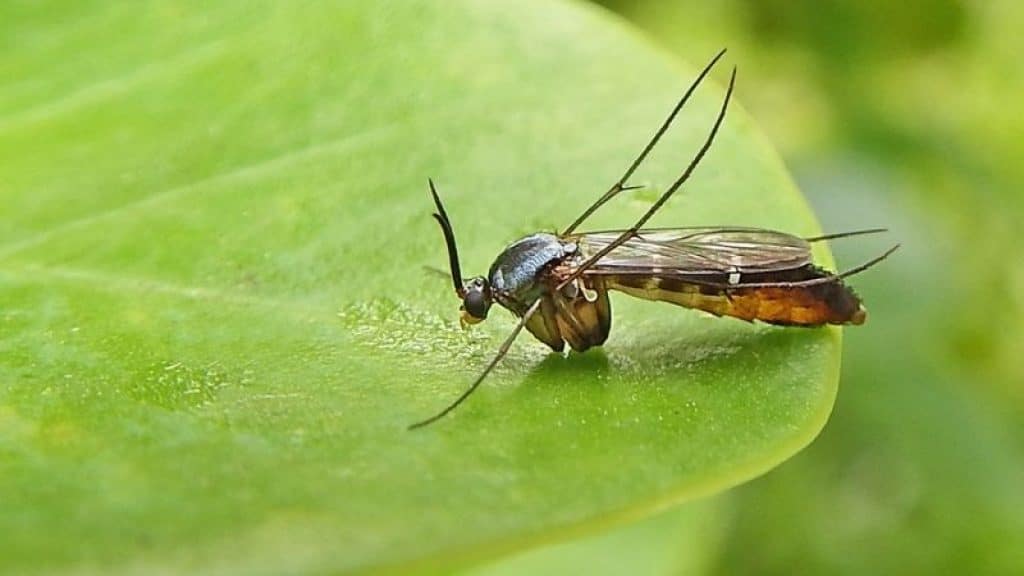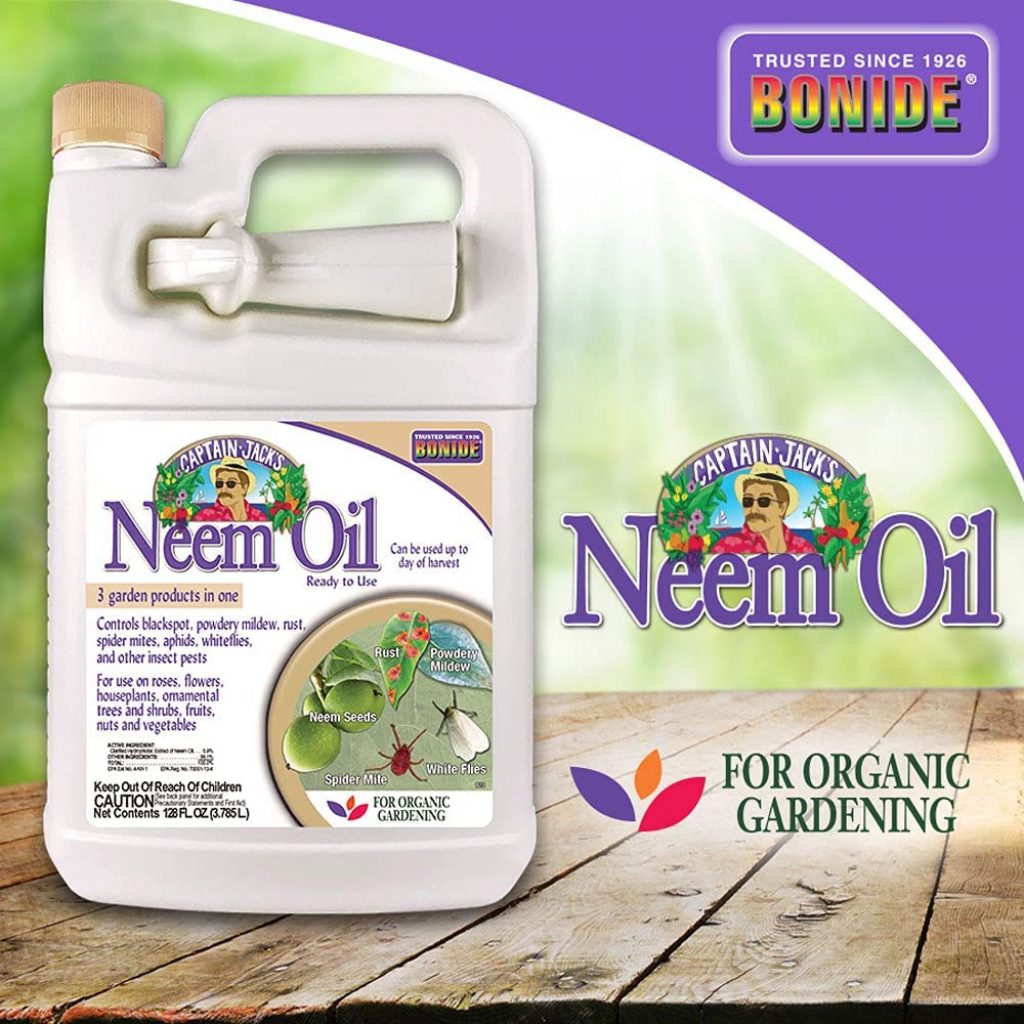Hydrogen Peroxide for Fungus Gnats: Say Good-Bye to Flies

Do you want to get rid of Fungus Gnats? Are they affecting your plants and causing disturbances in your life? Then don’t worry; We have a solution to your problem. Read till the end what we are suggesting, apply it, and then you won’t ever see Gnats in your home.
But why are we saying that? Do we have a magic wand to solve this problem? No, we don’t. However, what we are recommending is nothing short of magic. We recommend using Hydrogen Peroxide for Fungus Gnats. Now, stay with us as we explain how effective it is and how to use it?
- Moreover, as a bonus, we have also explained some other proventive techniques as well. So, without waiting any further, Let’s Dive in!
What are Fungus Gnats?
Fungus gnats (Sciaridae spp.) are pests found in the plant’s wet soil, household drains, or sewer system. They are 1/8 inch long and have thin wings, legs, and antennae. Fungus gnats’ larvae feed on soil fungus, organic compounds, and plant roots to develop themselves into adults.
Fungus Gnats are also attracted to light. That is why they are in clusters on lamps. Moreover, you can also see them coming on your face most of the time. But why is that? It is because Fungus gnats are attracted to Carbon Dioxide.
Fungus Gnats want wet soil as they lay eggs in it. They lay eggs in clusters and their larvae are translucent Gray to white in color. They feed on algae, decaying plant matter, and even plant roots. Moreover, they are more noticeable in winter and late fall.

Most people mistook fungus gnats with fruit flies. Fruit flies attack the fruits of the plant while fungus Gnats attack the roots and soil of the plant. Moreover, Fungus Gnats are darker in color than fruit flies.
How Fungus Gnats Damage Plants?
Before we analyze the damage, let’s see Fungus Gnats attack which type of plants. Fungus gnats do not spare any plant. They attack vegetative plants, flowering plants, trees, and even saplings.
Younger plants are more prone to Gnats infestation. Young plants have a loose growing medium and nutrients are also rich in it. This is perfect for Gnats to lay eggs. Adult Gnats do not bite people or animals. They are simply irritating as they keep coming towards your face, light lamps, and make irritating noise.
Its larvae, however, damages Plant roots leaving plants with stunted growth. Damaged roots cannot uptake nutrients and water. That is why you must stay alert when you see gnats appearing frequently at the home.
The eggs and even larvae are not easily noticeable. In adult plants, when you realize larvae have eaten roots of these plants, it is the point of no return. The plant cannot recover from this. That is why when you see Fungus gnats, it is time to use the biggest weapon these insects fear- Hydrogen Peroxide.
Use Hydrogen Peroxide for Fungus Gnats on Plants
Hydrogen Peroxide is an organic, inexpensive, and easy way to protect plants from these tiny “devils.” But Why do Experts recommend applying Hydrogen Peroxide for fungus gnats on plants? Moreover, what is the hydrogen peroxide treatment for fungus gnats?
Experts recommend Hydrogen Peroxide to kill gnats because only one treatment of it will surely end the life cycle of these flies. However, its biggest advantage is that it doesn’t harm plants or saplings. Moreover, experts recommend hydrogen peroxide for houseplant pests excluding Gnats as well. Commonly, 3 hydrogen peroxide methods for houseplants are used (More on that later!)
Before applying any treatment, it is necessary to dry the soil. Fungus Gnats larvae need moisture in the soil to develop themselves into adults and also to survive. However, drying the soil is not enough.
When the soil is dried, eggs may go into a dormant phase and again can develop when the soil gets wet again. So, the application of hydrogen peroxide or other insecticides is necessary after drying the soil. Peroxide for plant gnats is necessary to keep the situation under control.
How Hydrogen Peroxide Control Fungus Gnats?
Hydrogen peroxide and fungus gnats are always in the search history of gardeners. You have heard people recommending using hydrogen peroxide to get rid of fungus gnats.
Those who do gardening have questions in mind like do hydrogen peroxide kill fungus gnats? Where to find hydrogen peroxide for houseplant gnats? Does it really work or are these myths? Here we are answering your every question related to hydrogen peroxide and gnats.
First of all, let us say that Hydrogen peroxide is Super Effective in killing Fungus Gnats. These are not myths and people really do get desired results after using Hydrogen peroxide for fungus gnats on plants. But you have to apply in an appropriate way. Don’t worry, we are describing that too!
We use a combination of adding water and hydrogen peroxide for plants’ fungus gnats.
Apply Liquid Solution of Hydrogen Peroxide for Fungus Gnats
You can add hydrogen peroxide and water to kill fungus gnats. How?
1) First of all, let the soil of the plant dry. As Gnats hate dry soil, Hydrogen Peroxide will be fully effective in such conditions.
2) Add one part of Hydrogen Peroxide and four parts of water (Ratio 1:4).
3) Pour this mixture on that soil where you suspect Fungus Gnats’ larvae. Pour the mixture just like you water your plants. After pouring, some fizzing will appear but that’s normal. Hydrogen Peroxide will kill all Gnats larvae which come in contact with the mixture. After some time, fizzing will stop and hydrogen peroxide will break down into harmless water and oxygen molecules.
This method involves a balanced combination of water and hydrogen peroxide for fungus gnats. For adults, we use spray. It gives 100 percent result, that is why experts recommend treating fungus gnats with hydrogen peroxide is recommended by experts.
Use Spray of Hydrogen Peroxide for Fungus Gnats
Hydrogen Peroxide mixture when poured into the soil will kill larvae. However, adult Fungus Gnats “roam” around the plant and rarely sit on soil (mostly sits on wet soil only to lay eggs). That is why we use a spray of Hydrogen peroxide for Fungus gnats’ adults.
So, how to make hydrogen peroxide spray for fungus gnats?
1) Mix one part of hydrogen peroxide with four parts of water (1:4 ratio).
2) Spray this on leaves and stem where you are seeing Gnats.
3) Keep doing this until you see no fly.
This method is most effective to tackle the adult flies problem. That is why we use hydrogen peroxide spray for fungus gnats. In addition to this, Fungus Gnat traps are also placed in the pot. However, it only traps a few Fungus gnats’ larvae. So, one should adopt other methods with it as well.
Hydrogen Peroxide Soil Drench
We use the hydrogen peroxide soil drench technique for fungus gnats If flies are in large numbers. In this, we do the following things:
1) Stop watering the plant and allow the soil to dry out.
2) In the next step, we have to drench the soil with a hydrogen peroxide mixture. For this, take the pot outside or near the sink.
3) Mix hydrogen peroxide with water with a ratio of 1:4.
4) Saturate the pot with this mixture.
5) Wait for 10 minutes and repeat the saturation.
Again a Reminder: Adopt this step only if the Fungus Gnats’ Infestation is severe.
This method not only kills Fungus Gnats but also removes excess nutrient build-up from over-fertilization. By using hydrogen peroxide to kill fungus gnats, we are improving the anatomical condition of our plants.
How to Prevent Fungus Gnats to Re-Appear Again?
To prevent Fungus gnats to re-appear, do the following things:
1) The most important thing you should do to prevent flies infestation is to reduce the amount of water you are giving to pots. This does not mean you should not provide enough water to plants. It means don’t indulge in “over-watering.” When you over-water the pot, the soil remains wet for a longer time. This allows Fungus Gnats to re-appear on the scene again.
2) If there is organic debris waste, manure pile, or compost in the home, then dispose of them off as soon as possible. If you don’t, then consider them as an open invitation to gnats to re-appear.
3) Don’t over-fertilize plants with organic fertilizers. It is also one of the reasons for gnats re-emergence.
4) Keep windows and doors shut to prevent gnats from coming into the homes.
Is Hydrogen Peroxide Harmful to Humans or Plants?
No, the Hydrogen Peroxide mixture is not harmful to humans and plants as it is diluted with water with a 1:4 ratio. However, we use hydrogen Peroxide for Fungus gnats as it is still detrimental to insects.
But this is one side of the picture as we see some negative effects of hydrogen peroxide as well. It is because people sometimes add more hydrogen peroxide to the mixture. Excess of everything is bad and the same goes with Hydrogen Peroxide. So, don’t worry, add the hydrogen peroxide in recommended quantity and use it without any fear.
Neem Oil for Fungus Gnats
It is estimated that Neem Oil can kill more than 400 insect species. Neem oil contains the compound “Azadirachtin” which acts like a “poison” for insects. Azadirachtin makes Neem oil a natural insecticide. Insects react differently to Azadirachtin. Some could not eat plants after contacting neem oil and die. Some lose the ability to reproduce and lay eggs. In either case, insects die and our mission is accomplished.
In addition to Fungus Gnats, Neem oil can kill spider mites, nematodes, mealybugs, whiteflies, moths, aphids, beetles, cabbage worms, etc.
How to use Neem as Insecticide?
Neem oil mixture is another effective method to get rid of Fungus Gnats.
1) To begin with, pour warm water into a spray bottle.
2) Add dish soap (liquid form) in the spray bottle already containing warm water.
3) Now, add Neem oil to it. Shake the bottle for more than 2 minutes. Make sure to mix the oil completely with the mixture.
4) Spray this mixture on the leaves and stems of plants. Keep shaking it in during spraying as well.
In addition to the Hydrogen Peroxide and Neem oil mixture, microbial insecticides are also used against Gnats. However, Hydrogen Peroxide and Neem oil methods are cheap and effective. For fungus gnats, many experts recommend only hydrogen peroxide treatment because hydrogen peroxide kills gnats effectively at a low cost.
When and How to apply Insecticide sprays like Hydrogen Peroxide for Fungus Gnats?
You can apply insecticides like Hydrogen Peroxide for fungus gnats on plants by following these guidelines:
1) Apply the insecticide sprays in the dawn. Many insects are active early in the morning and go in hiding during day time. So, the best time to apply any spray is when you can clearly see insects like fungus gnats.
2) Some insects can also be the present underside of the leaf. So, apply insecticide on both sides of the leaves for better results.
3) Don’t apply any insecticide spray if the weather forecast is telling that it will rain today. If you spray and then rainfall happens, then you won’t get 100 results.
4) Clean the spray bottle before and after using it. This will help in increasing the purity of the mixture.
5) Make sure that your spray or mixture doesn’t fall on your furniture.
6) Keep the windows shut for a while after applying the spray. Moreover, when you apply the spray in a room, then you should not stay in it as its odor may make you nauseous.
Moreover, another Method to remove Fungus Gnats is Cider Traps. Fungus Gnats are attracted to Apple cider making it the perfect bait to use. Take apple cider and add washing-up liquid. Then allow gnats’ larvae to come. When they reach there, they are drowned in cider or vinegar.
Conclusion
Hydrogen Peroxide is an effective and easy way to get rid of Fungus Gnats permanently. Fungus Gnats are flies which is the cause of frustration among gardeners. Gnats’ larvae feed on decaying organic matter, compost, and plant roots. Plants cannot uptake water and nutrients with damaged roots. This will lead to stunted growth and even death sometimes. In three ways, you can use hydrogen peroxide to kill fungus gnats- Liquid mixture, Spray, and soil drenching.
Contrary to some rumors, it is not harmful to humans and plants. So, it is safe to use it but be careful and add only the recommended amount in the water. We have also discussed other methods like neem oil, apple cider technique, and Raw potato technique as well to control gnats. All of these have shown great results against these “tiny creatures”.
FAQs About Use of Hydrogen Peroxide for Fungus Gnats
Does hydrogen peroxide kill fungus gnats?
Yes, you should use Hydrogen Peroxide for Fungus gnats’ killing!
Is hydrogen peroxide harmful to plants?
No, Hydrogen Peroxide is not harmful to plants. However, when you use Hydrogen Peroxide in excess quantity, only then it will harm the plants. There is no need to worry as an excess of everything is harmful. So, add recommended Hydrogen Peroxide to the water.
How long does it take to kill fungus gnats with hydrogen peroxide?
Adults take a few days to die. However, larvae when exposed to Hydrogen peroxide will die within a few hours. That is why you should use hydrogen peroxide treatment for fungus gnats.
How do I get rid of fungus gnats permanently?
We have told you to use hydrogen peroxide to kill fungus gnats. You can add it in the form of the Hydrogen Peroxide mixture, hydrogen Peroxide spray, Drench soil hydrogen peroxide. Read them to get your answer.
Related Topics:










